What Are Wind Turbine Slip Rings And How Does It Work
BY NBG
 2025-10-23
2025-10-23
VIEWS: 211

What Are Wind Turbine Slip Rings And How Do They work?
The working principle of wind turbines
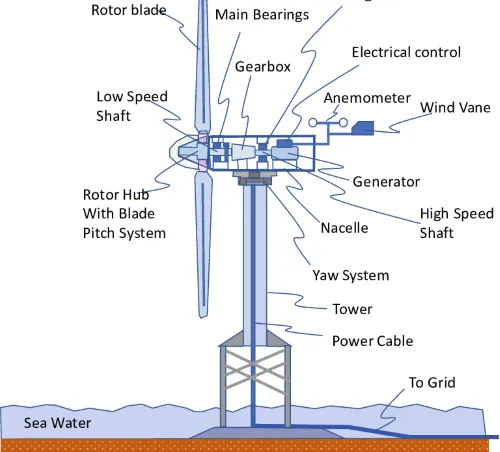
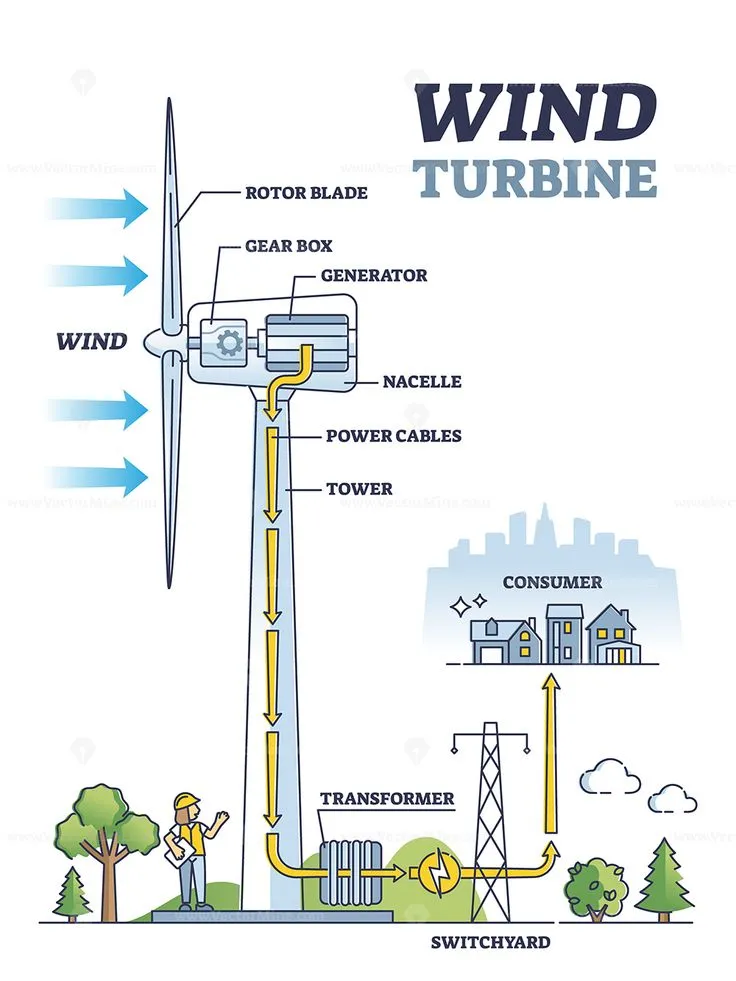
A wind turbine typically consists of a rotor with three blades, a nacelle, and a tower. The control system of a wind turbine includes wind speed and direction sensors, the main control system, the pitch system, and the converter system, among others. The main control system makes control decisions based on the perceived wind speed and transmits commands to the pitch system via a slip ring. The pitch system adjusts the blade angle according to the commands from the main control system. When wind speeds are low, the blades are spread to maximize the swept area and capture the maximum energy from the wind. When wind speeds are too high, the blades rotate to reduce the swept area, preventing the rotor from spinning too fast. During typhoons, the blades are feathered to gradually stop the rotor before applying the brake. When the main control system detects changes in wind direction, it also sends commands to the yaw system to adjust the turbine's orientation, ensuring the rotor faces the incoming wind direction.
Composition of Wind Power Slip Rings
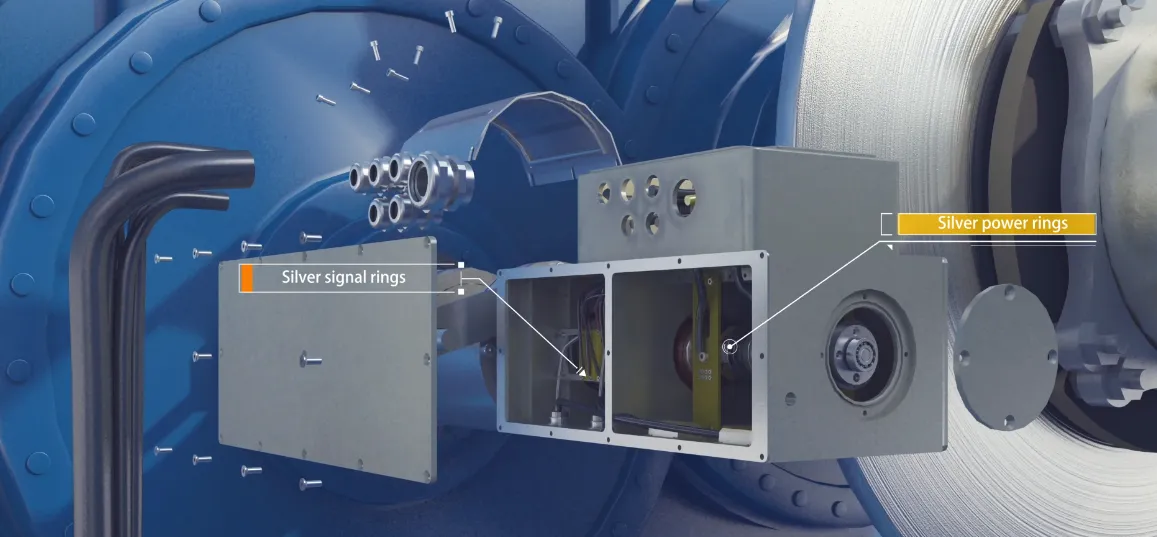
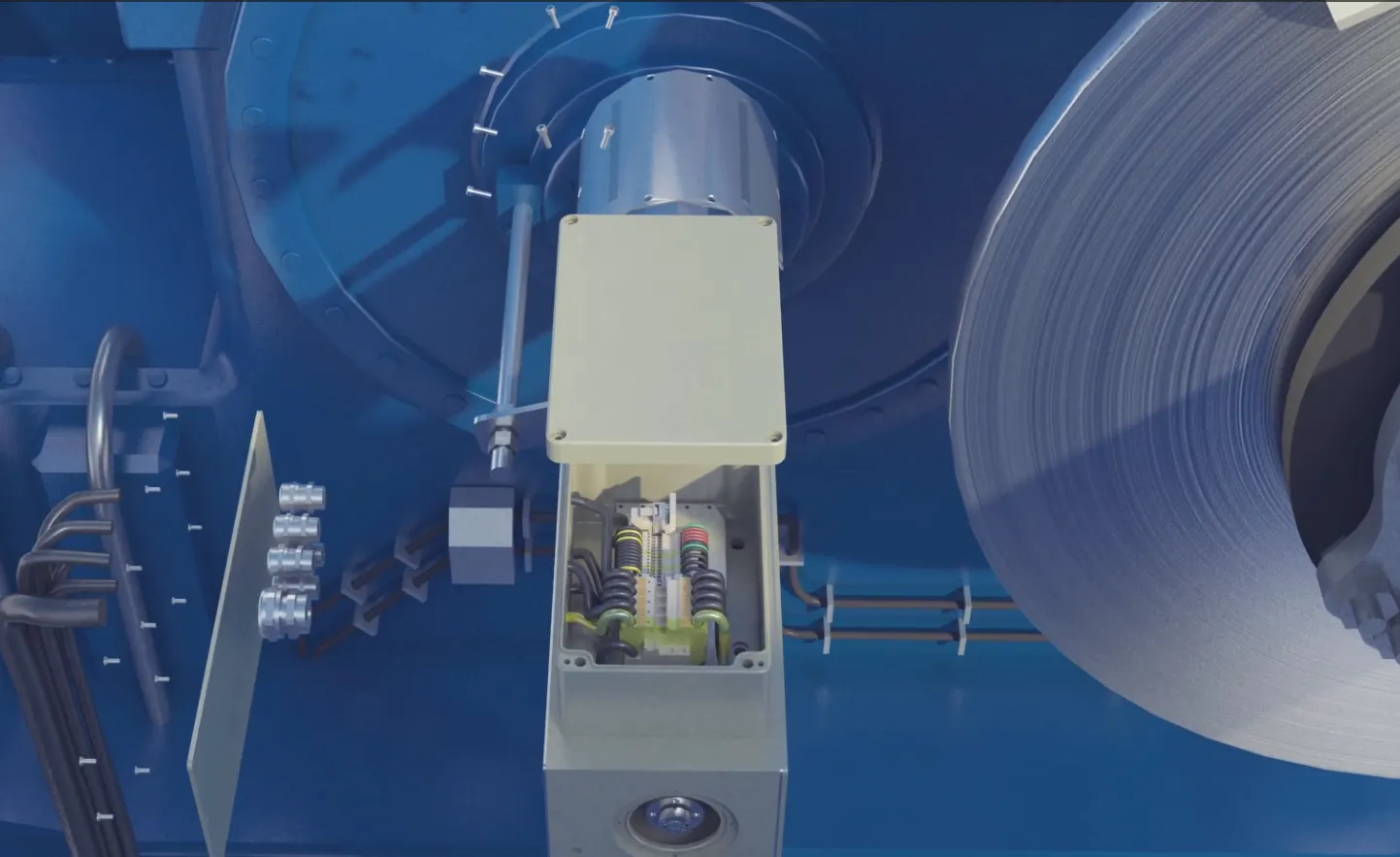
Wind power slip rings primarily consist of elastic materials (brushes), sliding contact surface materials (conductive rings, precision small steel bearings), insulating plastic materials, and resin bonding materials.
Conductive Ring (Rotor): Mounted on rotating components, it comprises one or more metal rings, each representing an independent transmission channel. These rings are responsible for transmitting current, signals, or fluids during rotation.
Brushes (Stator): Fixed to non-rotating components, typically made of wear-resistant materials such as precious metal alloys. They maintain contact with the rotating conductive rings. Brushes engage the conductive rings with light pressure to ensure stable electrical conductivity during rotation.
Wind turbine slip rings are positioned on drive shafts, such as the unit output shaft or the input and output shafts of the gearbox. Their primary structure comprises a housing, inner core, carbon brushes, and guide wheels.
The housing serves as the external protective casing for the wind turbine slip ring, typically fabricated from metal. Its main function is to shield internal components from external environmental influences and provide a mounting location.
The inner core is the central component of the wind turbine slip ring, usually fabricated from metal. Its primary function is to support the carbon brushes and guide wheels while providing electrical contact points.
Carbon brushes are among the most critical components of the wind turbine slip ring, available in graphite, composite metal, or fiber types. Their primary role is to make contact with the guide wheels during rotation, enabling electrical transmission. Carbon brushes must exhibit excellent electrical conductivity and wear resistance to maintain stable electrical contact during prolonged operation.
The contact wheel is another vital component in the fan slip ring, usually made of metal. Its primary function is to make contact with the carbon brush during rotation. Contact wheels are typically designed in spherical or cylindrical shapes, offering a large contact area and minimal friction resistance.
Which types of Slip Rings are used in a wind turbine?
2.1 pitch system slip ring
2.1.1 some wind turbine manufacturers like Vestas Gamesa,they are using a Hydraulic pitch control system, so we need a hydraulic pitch slip ring kit, which consists of a hydraulic rotary joint and an electrical signal transmission slip ring.
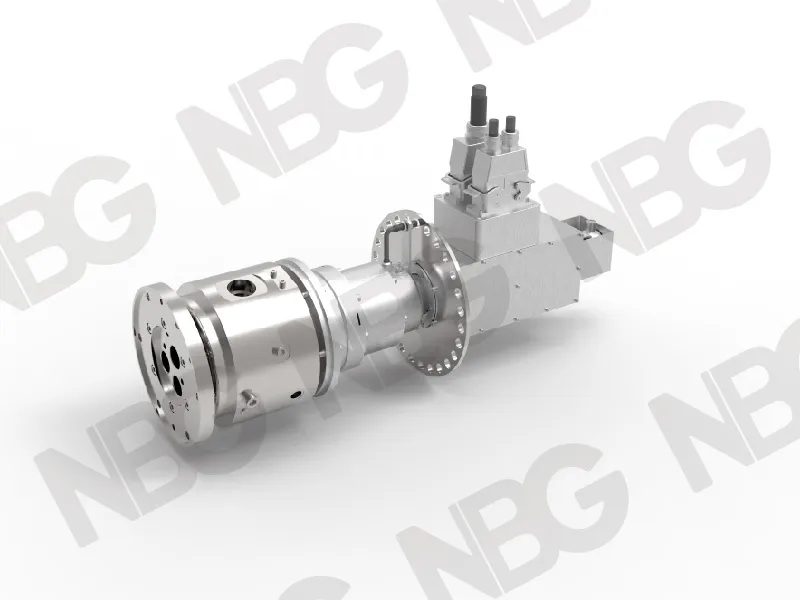
2.1.2 Some wind turbine manufacturers like GE Goldwind Repower,they are using electric pitch control system,so We need an electrical pitch slip ring to transmit control signals and electric power.
2.2 Power Slip Ring Assembly for Wind Turbine Generator, currently most of the Wind Turbines are using doubly fed generator,such kind of generator needs a Power Slip Ring Assembly.
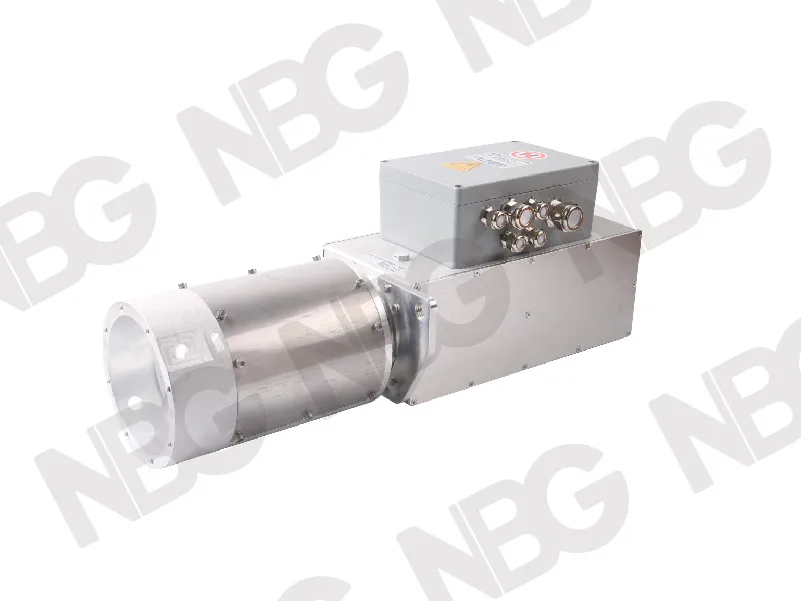
2.3 Yaw Slip Ring, In certain wind turbine designs, to prevent the cables inside the tower from swinging back and forth and causing wear or damage to the cable jackets during yawing, as well as to enhance the nacelle's ability to yaw 360 degrees, a yaw slip ring is employed. Conventional turbines typically use a cable twist switch to periodically unwind the cables, whereas turbines equipped with yaw slip rings do not require cable unwinding and can rotate freely in any direction for 360 degrees.
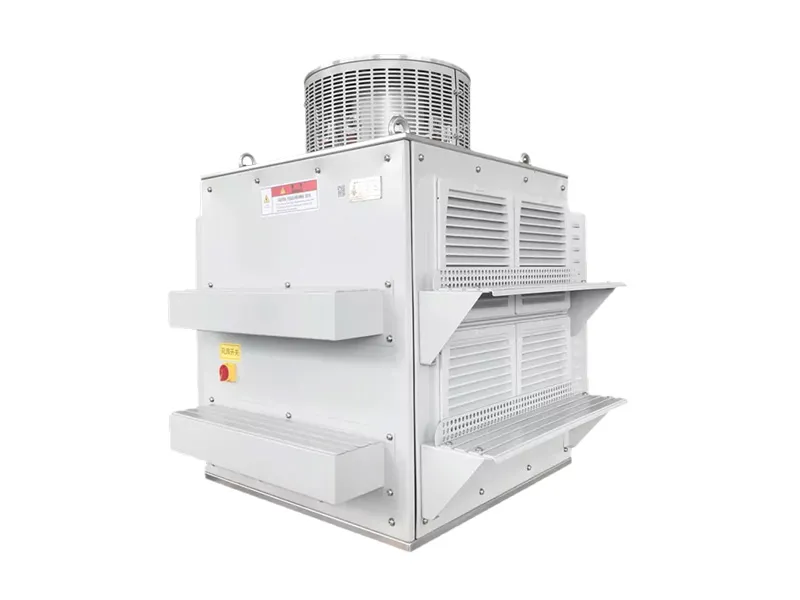
How Does A Slip Ring Work
3.1 Hydraulic rotary joint or hydraulic slip ring, Typically, hydraulic rotary unions are designed based on the flow rate and pressure requirements of the hydraulic pitch system, determining the number of channels and their diameters. Engineers must select materials and sealing systems according to the pressure in each channel. A high-quality hydraulic rotary union will have minimal oil leakage.
3.2 Electric slip ring
3.2.1 For traditional contact transmission control signals,We require extremely low background noise (typically below 50 milliohms) to ensure stable data transmission. Additionally, designers must account for wind turbine vibrations, wear debris from brush wires and sliding tracks, variations in temperature and humidity, and the presence of salt or corrosive gases such as hydrogen sulfide in the air. When calculating Insulation between rings, altitude effects must also be considered. Meanwhile, a suited tribological pairing will cause long life time between the brushes and rings.
3.2.2 For power transmission of pitch slip rings, we must consider temperature and humidity, the presence of salt or other corrosive gases such as hydrogen sulfide in the air, altitude, and vibration.
Meanwhile a suited tribological pairing will cause a long life time between the brushes and rings. For current transmission, proper maintenance can effectively extend service life and prevent arcing.
3.2.3 For Power Slip Ring Assembly products, heat dissipation and insulation are among the top priorities in design. Additionally, the selection of carbon brushes and the tribological pairing between the brushes and brass or stainless steel Rings are critical factors.
NBG is a leading manufacturer of wind turbine slip rings. With years of experience and the delivery of over 90,000 slip rings, NBG's silver-alloy fiber brush system paired with silver-plated Rings—a silver-to-silver contact solution—has demonstrated exceptional reliability and long lifetime(over 100 million revolutions). This is due to its multiple contact points, low resistance, minimal background noise, excellent vibration resistance, corrosion resistance, and many other advantages.
NBG also provides Fiber Optic Rotary Joints (FORJ) and Capacitive Coupling contactless transmission modules. These contactless transmission technologies can handle higher bandwidth data transmission (even up to 10 GBit/sec) while delivering exceptional reliability (bit error rate of 10^-12). NBG's contactless solutions have been successfully applied in some high-end wind turbine models, accumulating extensive practical experience.
To learn more about wind power slip rings, visit NBG's professional wind power knowledge base via the link:https://nbgslipring.com/news/blog
To learn more about wind power products, please visit: https://nbgslipring.com/product/wind-turbine-slip-ring
NBG looks forward to connecting with you.








